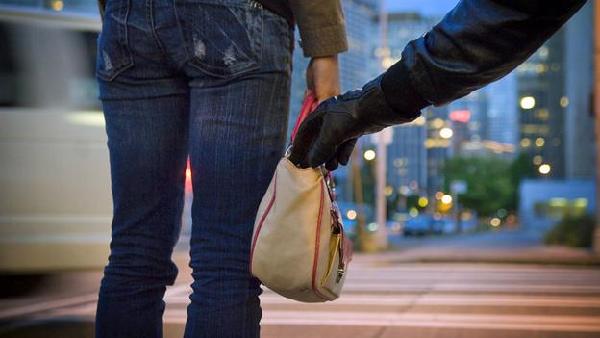|
查看原文
Pickpockets use much more than sleight of hand, says Caroline Williams, they hack your brain’s weaknesses.
My mother has eyes in the back of her head. She also taught me from an early age to be suspicious of strange men, especially when they give you presents. Which makes it all the more surprising that a “nice man” bearing flowers managed to swipe 20 euros from her purse, while she was holding it in her hands and looking straight at it.
“He said he was collecting for a church charity so I pulled out a euro,” she explains. “He said “no, no, that’s too much” and offered to look in my purse to find a smaller coin. He must have slid out the 20 euro note at the same time. I didn’t even notice until an hour later. I felt so stupid.”
But she needn’t feel bad. According to neuroscientists our brains come pretty much hard-wired to be tricked, thanks to the vagaries of our attention and perception systems. In fact, the key requirement for a successful pickpocket isn’t having nifty fingers, it’s having a working knowledge of the loopholes in our brains. Some are so good at it that researchers are working with them to get an insight into the way our minds work.
The most important of these loopholes is the fact that our brains are not set up to multi-task. Most of the time that is a good thing – it allows us to filter out all but the most important features of the world around us. But neuroscientist Susana Martinez-Conde, the author of the book Sleights of Mind, says that a good trickster can use it against you. She should know: as a researcher at the Laboratory of Visual Neuroscience in Arizona, she has studied how Las Vegas stage pickpocket Apollo Robbins performs his tricks.
“When Apollo gets someone on stage,” she says, “he is making them look at things, he is talking to them, he is touching their body, he is coming very close to them and producing an emotional response as he is entering their personal space… It’s complete attentional overload.”
So while sleight of hand helps, it’s as much about capturing all of somebody’s attention with other movements. Street pickpockets also use this effect to their advantage by manufacturing a situation that can’t help but overload your attention system. A classic trick is the ‘stall’, used by pickpocketing gangs all over the world. First, a ‘blocker’, walks in front of the victim (or ‘mark’) and suddenly stops so that the mark bumps into them. Another gang member will be close behind and will bump into both of them and then start a staged argument with the blocker. Amid the confusion one or both of them steal what they can and pass it to a third member of the gang, who quickly makes off with the loot.
“People think it’s about distracting someone by making them look away but it’s actually about directing the mind towards something,” says James Brown, a stage pickpocket and hypnotist based in the UK. “If I wanted you to stop looking at something on the table it’s much easier for me to give you a good reason to look at something else. If I give you two or three things to focus on and the one I want you to avoid isn’t one of them, then that’s even better because now you have the illusion of choice.”
Other tactics are more psychological. Pickpockets tend to hang out near ‘beware of pickpockets’ signs, because the first thing people do when they read it is check they still have their valuables, helpfully giving away where they are. And in my mother’s case, the thief’s best trick was not coming across like a pickpocket. “He was a very nice guy and very personable. Not someone that would cause you to suspect,” she says.
Brown thinks confidence plays a major role too. “The biggest ploys used by theatrical pickpockets and the kind of street pickpockets that will actually engage with you, is simply an incredibly alluring display of confidence,” he says.
In theory, he adds, the power of suggestion alone is enough to persuade the most streetwise person to hand over their valuables. In 2009 a Russian bank employee gave over $80,000 of cash to a woman who apparently hypnotised her. “If you’ve got a bit of rapport with somebody and they trust you, it’s easy,” says Brown.
Smart moves
On the stage, specific movements can also trick us. When Apollo Robbins started working with Martinez-Conde he told her that he had a hunch that certain ways he moved his hands seemed to affect how well he could direct a person’s attention.
If Robbins moved his hand through the air in a straight line between two points, he said, it was less effective at holding people’s attention on the end point than moving his hand in an arc motion. An arc motion would make people’s gaze stick to the curving hand and stay there, while a straight line would make their eyes flick back to the beginning and jump between the two.
Sure enough, eye tracking experiments showed that his hunch was right. But why? Martinez-Conde says that it is all down to the way different movements engage the visual system. Following an arc uses an eye movement called ‘smooth pursuit’, where the eye continuously follows an object. A straight line makes the eye move in a ‘saccade’, a fast movement where the eye moves from point A to point B in a fraction of a second.
“When we make a saccade our visual system is blind during the flight of the saccade, so you can see at the beginning and you can see at the end but while the eye is moving you cannot see,” she says. During smooth pursuit, however, there is no blind period, the eyes follow the moving object continuously from start to finish.
One explanation for why this makes us more likely to follow the hand, is that with a straight line, the eyes snap back to the beginning of the movement to try and fill in what the brain didn’t see during the movement. Whatever the explanation, it can be a very useful tool for a pickpocket. “Depending on what the pickpocket is interested in he may engage one or another type of motion, with or without engaging the person’s attention,” she says.
Dirty tricks
Of course, if you want to play with someone’s powers of perception, a good time to try would be late at night when after a few drinks everything is already a little fuzzy. Brown says he spent a particularly fascinating night observing pickpockets outside nightclubs in London’s Trafalgar Square.
“They employ some clever tactics. A classic is that a girl comes up to you outside of a club and starts talking to you and as she’s doing it she starts rocking very gently. And the person thinks they are rocking so they compensate and start rocking and fall over. And she’s very kind and she helps you up and maybe her friend helps, too. You stumble off and the next morning you realise your watch has gone and your wallet is gone, everything’s gone.”
Having said all that, Brown is keen to point out that most thefts are opportunistic. “Having spent some time with the Romanian pickpocket gangs in London Bridge, it was fascinating to see how the level of skill is far less than you think. There’s a danger that these people are portrayed as being so skilled that it becomes almost endearing and elegant. Most of these people aren’t that at all, they are mostly opportunistically thieves.”
But, he warns, they are opportunistic enough to keep up with new technology. In the not too distant future, hacking contactless debit cards could prove just as fruitful for thieves as hacking our minds.
“Rather than take your wallet and get £50-60 and run the risk of being caught, why not walk through a busy place and just tap everybody’s pocket? If you took £19.99 off everybody, which is the limit of the contactless cards, that would be a very lucrative day right there. It’s all a little bit frightening.”
Still, knowing about all these tricks can make you a little less likely to have your valuables pilfered. At the very least, Brown says, it’s an idea not to zone out too much in public. “A street thief will avoid like the plague people who are demonstrating a very open awareness of their environment. The man on the tube who is looking around, being very aware, they won’t go anywhere near,” And as my mother would no doubt remind you, it’s also an idea to keep away from strangers with flowers.
|
查看譯文
據英國BBC網站報道,卡羅琳·威廉姆斯(Caroline Williams)稱扒手不僅手法熟練,還熟知你大腦思維的弱點。
我母親能感知背后發生的事情,仿佛她后腦也長了眼睛似的。從小她就教我要疑心陌生人,尤其是那些送你禮物的陌生人。所以,讓我尤其吃驚的是,一個手持鮮花的“好人”能從我媽錢包里順走20塊錢,當時我媽正忙著欣賞握在自己手里的鮮花。
“他說他在為教堂慈善活動籌款,所以我掏了1歐元出來,”我母親解釋,“他說‘不不,太多了’,然后說要看看我的錢包,只要個小硬幣就夠了。他肯定在這時將20歐的紙幣偷走。一個小時后我才發現,我太笨了。”
但她不需要感到很糟糕。神經系統科學家稱因為我們的注意力和感知系統出現異常行為,而我們的大腦認知極為模式化,所以容易被騙。實際上,一個扒手要成功偷竊的關鍵不在于靈活的手指,而是對我們大腦漏洞的認知。有些扒手很擅長發現人的認知弱點,有些研究人員甚至與扒手合作,深入探解我們的大腦是如何工作的。
最重要的一個弱點是我們的大腦難以同時兼顧多項任務。通常這是好事——這樣我們就能篩選出身邊最重要的信息。神經系統學家蘇珊娜·馬丁內斯-康德(Susana Martinez-Conde)是《大腦詭計》(Sleights of Mind)的作者,她認為這個大腦弱點讓我們容易受騙。她應該知道:作為美國亞利桑那州(Arizona)視覺神經學實驗室(Laboratory of Visual Neuroscience)的研究人員,她已經研究過美國拉斯維加斯(Las Vegas)表演扒手阿波羅·羅賓斯(Apollo Robbins)的表演伎倆。
馬丁內斯-康德說:“阿波羅將觀眾引到臺上,讓他們看些東西,跟他們說話,接觸他們的身體,漸漸接近他們,營造某種情緒反應,讓阿波羅有一種進入私人空間的感覺……就是增加一些信息而已。”
所以將一個人的全部注意力轉移到其他地方,加點手上技巧就成功了。街上的扒手也會營造某種只會增加你注意力負荷的場合,通過這種方法順利偷竊。全世界的扒手幫派都用的典型偷竊場景是“急停”。首先,一名“阻擋者”扒手走在受騙者(“目標”)前面,然后突然停下來,與“目標”撞個滿懷。另一扒手同伴緊跟其后也和“阻擋者”、“目標”撞在一起,然后就開始扮演與“阻擋者”發生爭執,在混亂中他們其中一個或兩個偷到能摸得著的東西,然后轉手交給第三個同伴,第三個同伴再快速離開現場。
“人們會覺得讓他們看別處會使他們分心,實際上這會使他們的大腦分散注意力,”英國的扒手表演者和催眠師詹姆斯·布朗(James Brown)說,“如果我想讓你不再看桌上的東西,給你一個理由看別處會更容易。如果我讓你關注兩三樣東西,但不包括我不希望你關注的東西,這更好,因為這會讓你產生有選擇的錯覺。”
其他策略的心理作用更明顯。扒手喜歡在有“小心扒手”路標的地方逛,因為人們看到路標首先會檢查自己的貴重物品有沒有丟,于是就等于幫助了扒手,告訴他們目標在哪兒。而我母親遇到的小偷最厲害的手段不是像一般的偶遇手段。我母親說:“他是一個友好的小伙子,很有風度,不像那些會引人懷疑的人。”
布朗認為自信對扒手也很重要,他說:“表演扒手和與你接觸的街上扒手最重要的策略是展示出富有魅力而又難以置信的自信。”
布朗補充,理論上光是暗示的力量就足以讓街上最聰明的行人交出財物。2009年,一個俄羅斯銀行職員被一個女人催眠,并將80,000美元的現金交給了這個女人。布朗說:“如果你對人比較和善而他們又信任你,那你就容易得手。”
巧妙的動作
在舞臺上,一些特殊的動作也能欺騙我們。當阿波羅·羅賓斯與馬丁內斯-康德合作時,他說他有預感,他移動手的某些方式似乎會影響他控制某個人的注意力。
羅賓斯說,如果他在空氣中的兩點間直線移動手,然后在某點停下,這動作控制人們注意力的效果不如在空中做弧形移動。弧形移動能使人注視彎曲的手并在移動終止點集中注意力,但直線移動會讓人目光閃回起始點,并在兩點間移動。
的確,目光跟蹤實驗證明羅賓斯的預感是對的。但為什么會這樣?馬丁內斯-康德說這都因為不同的動作會引起視覺系統的反應。眼睛跟隨弧形移動的滑動叫“平滑移視”(smooth pursuit),此時眼睛持續盯著一個物體。直線移動讓眼睛處在“眼掃視”(saccade)狀態,眼球瞬間在A點和B點間快速移動。
馬丁內斯-康德說:“當眼睛在快速掃視時,我們的視覺系統是瞎的狀態,所以你在移動的起點和終點都能看得見,眼睛移動時卻看不見。”然而在平滑移視中沒有看不見的時刻,隨著物體從運動開始至結束,眼球持續移動。
對于為什么眼睛更容易跟著手動,一個解釋是手在直線移動結束后,眼球會返回起始點,嘗試補回剛才大腦看不見的移動軌跡。不管是什么原因,這對扒手來說都是有用的手段。馬丁內斯-康德說:“扒手會根據自己感興趣的東西而做一些其他動作,以影響或不影響對方的注意力。”
卑鄙把戲
當然,如果你想和別人玩弄一下感知力量,對方深夜喝了幾杯對一切感覺迷迷糊糊時是嘗試的好時機。布朗說他曾在一個特別美好的夜晚在倫敦特拉法加廣場(Trafalgar Square)的酒吧外觀察扒手。
布朗說:“他們會用些聰明的策略。有一個很典型的策略。酒吧外一個女孩向你走來,開始和你交談,并開始慢慢搖晃你。你會覺得自己在搖晃,想保持平衡,也開始搖晃起來,然后就跌到。那個女孩好心來扶你,或者她的朋友也會幫忙。最后你跌跌撞撞倒下,第二天早上發現手表不見了,錢包不見了,所有東西都不翼而飛。”
布朗說了這么多,是想指出多數偷竊都是投機的。他說:“我在倫敦塔橋觀察羅馬尼亞扒手幫很久了,他們的技巧其實沒有你想的那么厲害,我挺吃驚的。這些人被描述得那么厲害,甚至讓人覺得可愛優雅,這挺危險的。這些扒手大多數都不是這樣的,他們大多是投機取巧的小偷。”
但是布朗提醒我們這些扒手伺機而動,也會使用最新的科技。在不久的將來,偷取無接觸式借記卡對小偷來說與入侵我們大腦思維一樣有成效。
布朗稱:“偷走錢包,拿走五六十英鎊,還要冒著被捉的風險,與之相比,為什么不走進熙攘的地方拍拍每個人的口袋?如果從每個人身上拿走19.99鎊——這是無接觸式借記卡的上限,這樣一天在那兒就能掙不少。這些聽起來都讓人有點害怕。”
但了解一下所有這些偷竊手段能讓你被偷貴重物品的幾率降低一些。布朗說,至少要知道在公眾場合盡量不要分神,“街上的小偷會像躲瘟疫一樣躲開那些對四周保持警覺的人。地鐵里四處張望的人,扒手是不會靠近的。”我母親的案例無疑也會提醒你注意與拿著花的陌生人保持距離。
(譯者 lunachiao 編輯 丹妮)
掃一掃,關注微博微信
 
|


